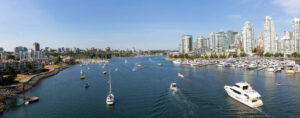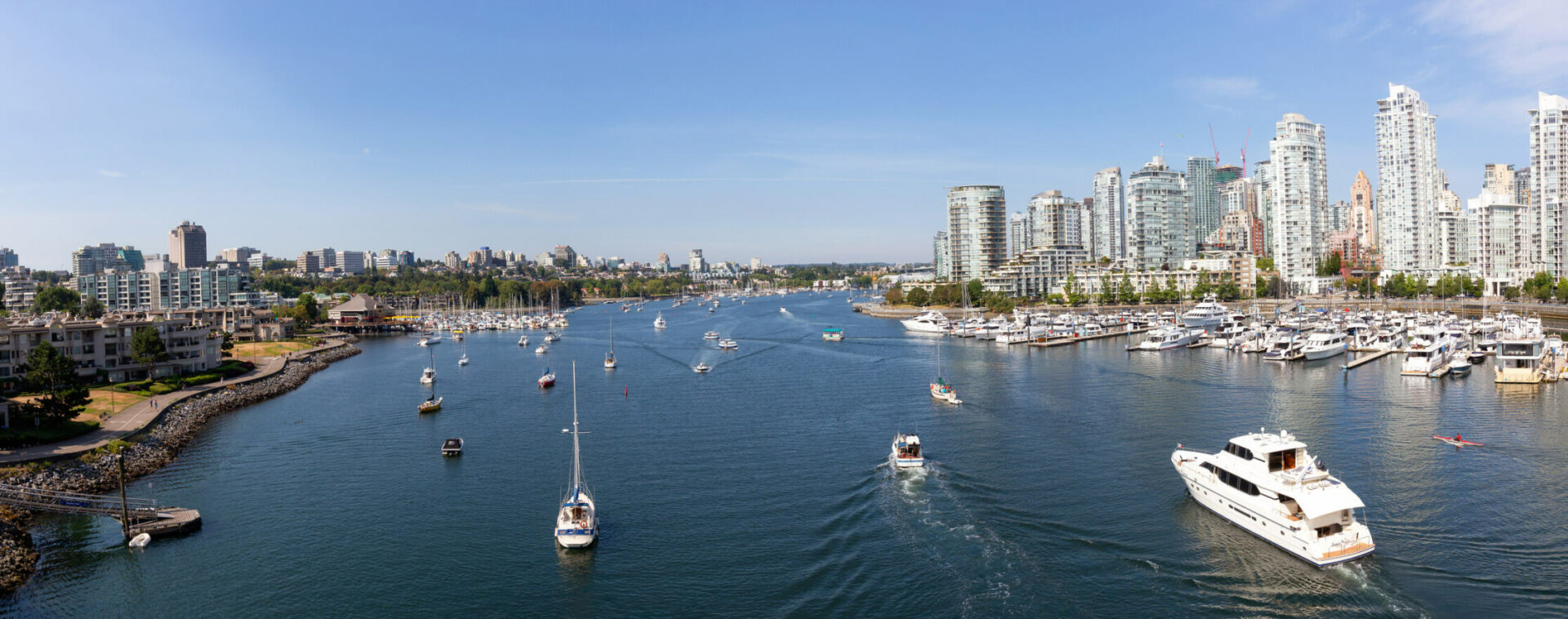Meeting new boaters was a particular highlight of cruising this summer, along with listening to their animated commentaries about the lifestyle. Disappointing, however, was hearing about their boating traumas, as many of the situations should never have happened. Sadly, the cause was often other cruisers.
With the sun sparkling on the open ocean, it is easy to be lured out on the water forgetting that, like driving a car, there are certain ‘Rules of the Road’ and safety strategies that have to be learned and followed. These are the law and apply to all types of craft whether power, sail, or human powered. Above all, you must always be aware of everything around you and minimize your actions that adversely affect others.

The Maritime Rules of the Road—A Quick Refresher
The International Regulations for Preventing Collisions at Sea (COLREGs) is published by the International Maritime Organization and comes under Transport Canada jurisdiction. It is a lengthy and complex document, but the following are the most important rules to know for pleasure craft.
Like driving on the road, these rules should be learned and followed instinctively, and your intentions made clear well in advance.
When Two Vessels Meet
- Meeting head on: When two power vessels are approaching head on, both vessels should alter course to starboard (turn to the right) to pass port-side to port-side (red light to red light).
- Crossing: When two power-driven vessels are crossing and on a collision course, always give way to the vessel to starboard (right) by either stopping or altering course to starboard. As the give-way vessel you must take early and obvious action. At night the approaching right of way vessel will show a red light.
The vessel with the right of way, the stand-on vessel, must maintain its current speed and course, keep a lookout, listen to any communication from the give-way vessel and be ready to act, if required. At night the give-way vessel on your left will show a green light, indicating you should maintain your course.
- Overtaking: Every vessel (power or sail) that is overtaking must keep well clear of the vessel they are overtaking. You are overtaking if you are approaching another vessel anywhere in a 135-degree sector at its stern.
- Give way to a vessel restricted by its ability to manoeuvre: This may be due to the current nature of its work such as a commercial fishing boat, tug and tow, restricted draft or a breakdown, such as an engine failure, or a rescue. Always monitor with radar and AIS and be prepared for radio communications.
Note: The right of way vessel still has the responsibility to avoid a collision and must be prepared to take avoiding action in the event the give-way vessel does not respond correctly.
Know the common sound signals (often used by BC ferries). For example, five (or more) short, rapid blasts signal danger or that they do not understand or they disagree with the other boater’s intentions.
When Power Meets Sail
- Power gives way to a boat under sail (when not using any power), unless the sailing vessel is overtaking.
- Rowboats, canoes and paddleboarders have the right-of-way over power-driven boats but if a vessel is unable to manoeuvre functionally, the more manoeuvrable vessel gives way.
When Sail Meets Sail
- The vessel that has the wind on its starboard (right) side has the right of way (on starboard tack).
- The vessel which has the wind on its port (left) side must give way.
- When both boats have the wind on the same side the windward (upwind) boat must give way.
Channels and Harbours
Channels
- All vessels must keep to the starboard (right) side of any channel or restricted area (pass port to port, red light to red light).
- Vessels less than 20 metres long and fishing vessels must take particular care to not get in the way of larger vessels within a narrow channel.
- Sailing vessels should avoid sailing in a narrow channel. They must give way to power-driven vessels restricted in their ability to manoeuvre in the channel.
Harbours
- Extra care should be taken in crowded harbours, with other boaters being given a wide berth.
- Inside a harbour you must keep out of the way of any ship over 500 tons as they are slow to react (usually about 50 metres in length) or any ship hampered by its draft.
- Avoid the shipping lanes when possible and be aware of float planes.
- Avoid going near parked ferries and ferries in transit.
- You must keep to the designated speed and not create a wake, which could cause unnecessary danger to other boats or people.
- Anchoring in a shipping channel is not permitted.
You can order a free, waterproof quick reference card that explains the basic rules of the road from the Transport Canada website. Search shop.tc.gc.ca for “Rules of the Road.”
Operator Expectations
While we all love to have fun on the water, along with following the rules, a priority is using the boat safely and being considerate of those around you.
Be Prepared
The U.S. Coast Guard estimates that 70 percent of boating accidents are caused by operator error. Before you head out cruising it should go without saying that you should have acquired your Pleasure Craft Operators Card, learned basic boating skills, have practised these in your current boat, know that the boat is in good working order and that it has the required safety gear aboard.
Maintain a Proper Lookout
Inattention is ranked as the single greatest cause of accidents. Like defensive drivers, boat operators should keep watch at all times by looking and listening all around the boat. They should also use their navigational aids and radio and be constantly analysing any risk of collision with another boat or obstacle. Talking, texting and general use of cell phones while boating presents a problem on the water.
Speed
Speed is the second most common cause of accidents. Reduce speed in crowded areas, particularly around sail and non-powered boats, when swimmers, debris or wildlife are in the water, and in areas of challenging navigation. Increased speed accelerates the need for attention and should always be related to visibility and avoidance capability. Ideally have a second person keeping watch.
The Effect of Waves
Do you take responsibility for your own wake? It is, in fact, a government requirement. Do you look behind you after overtaking? If not, you may not have noticed that overtaking close to another vessel can cause them to violently toss around, causing danger to the crew and disaster below. Conscientious cruising demands that faster vessels keep a wide distance from other boaters, so their wake has little effect.
Local Knowledge
Being aware of local hazards such as logs (of which there were many this year), tugs and tows and extreme rapids will also help produce a peaceful passage, along with reading navigational aids correctly to avoid the many “invisible” rocks.
Note the following offences have been added to the Criminal Code of Canada:
Operating a vessel dangerously
Operating a vessel when impaired
Towing water skiers improperly
Failing to stop at the scene of an accident
Operating an unseaworthy boat
So, are you always aware of what is going on around you and the effect you have on others? There are many ways of enjoying mobility on the ocean. Some like to get from A to B quickly and relish the sensation of speed. Others move more slowly and are exhilarated by harnessing the wind, while others like to use their own power. The maritime rules of the road give avoidance strategies for all types of vessels but there is also cruising safely and the responsibility to respect and share our waters for all. We are lucky our cruising grounds are large and relatively uncrowded. Cruising conservatively by maintaining a safe speed, keeping watch diligently, practising avoidance strategies early, passing at a distance and being aware of your impact on others will allow everyone to relax and enjoy being on the water in their own way.
Liza has written four books about cruising that have all recently been made into e-books. Three narratives take the reader around the world, and North and Central America. The fourth, written with husband Andy, is the how-to text Cruising for Cowards, an A-Z for Coastal and Offshore Sailors. with a new Third 20/21 Edition. Visit aboutcruising.com for the best rates to order.
